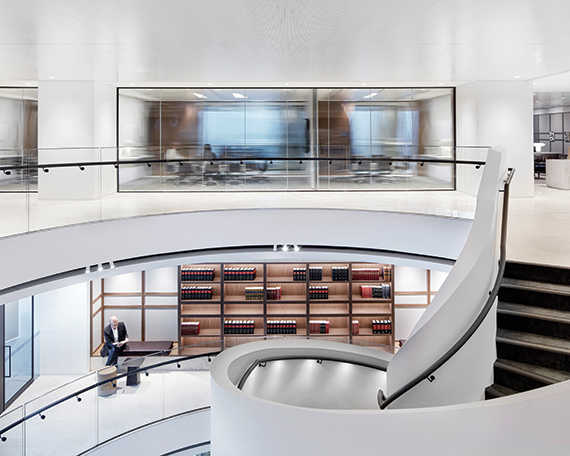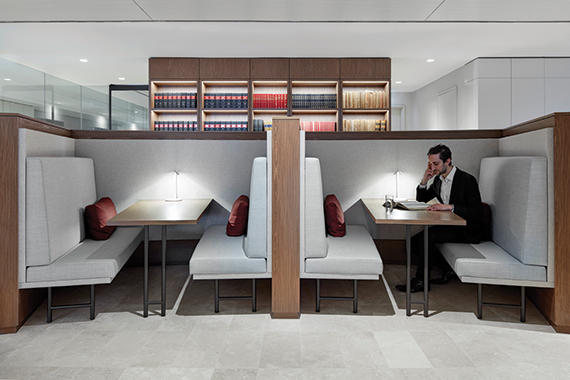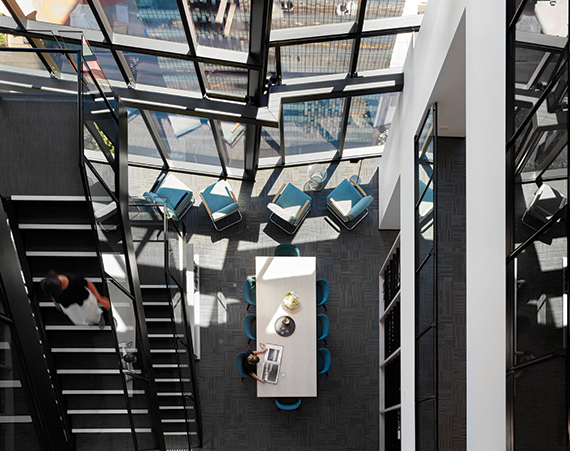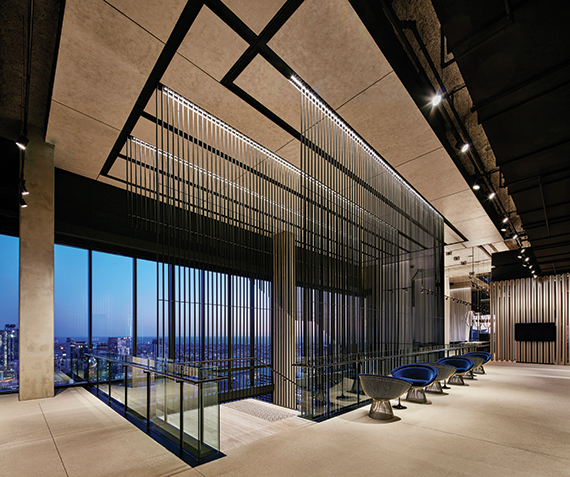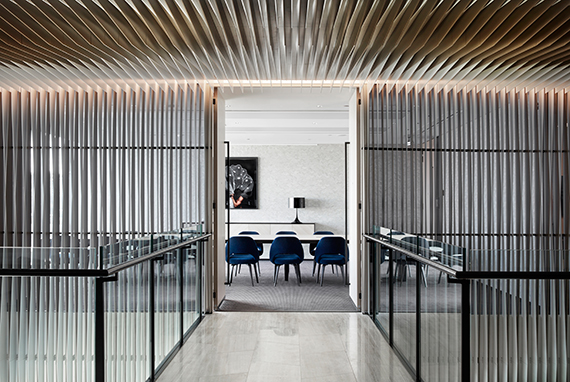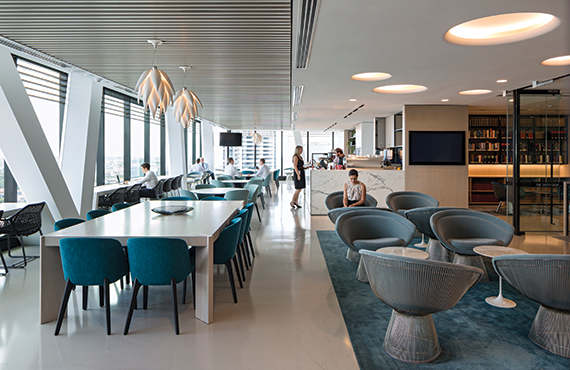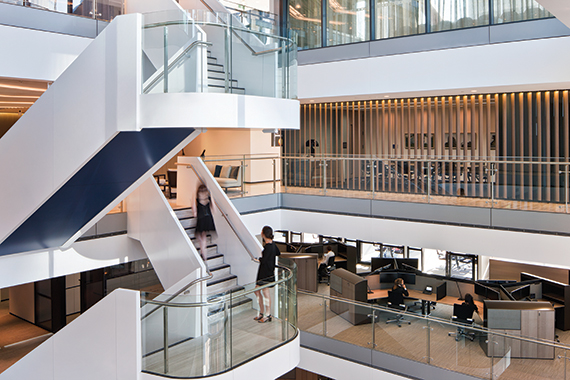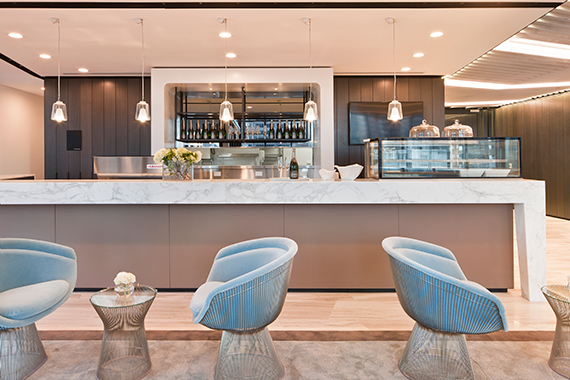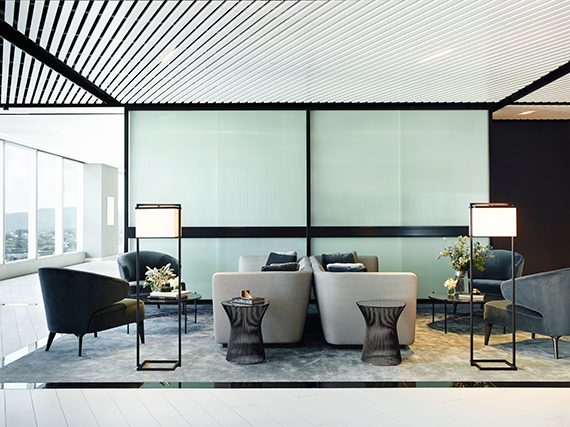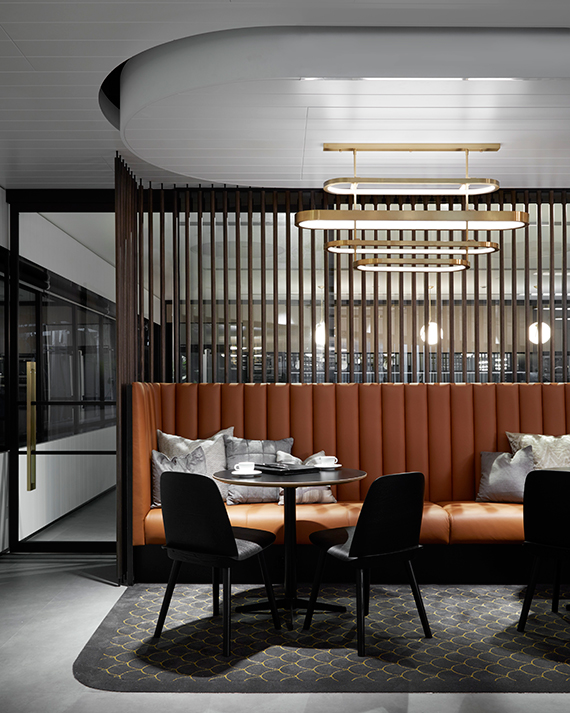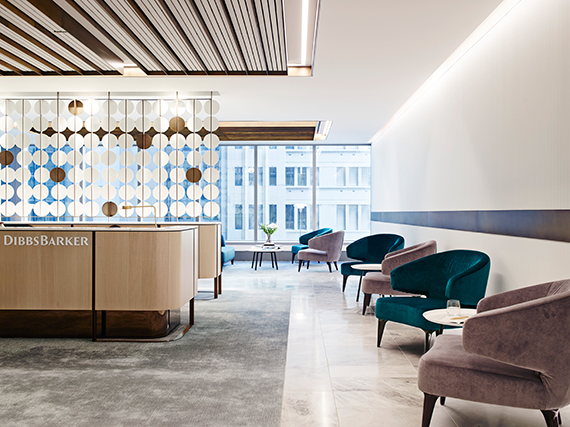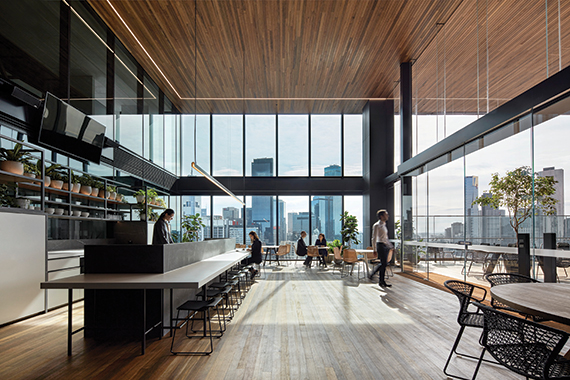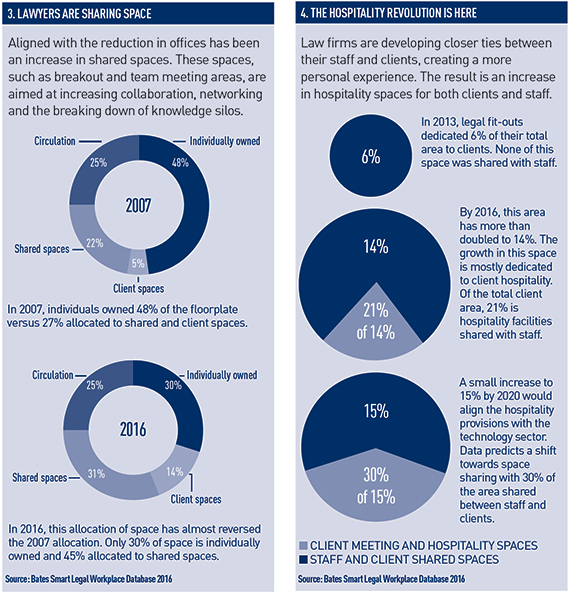Drawing on architects’ experiences in Australia, Kellie Payne looks at how the legal workplace may change in the UK over the next decade
Over the past 10 years a quiet revolution has been happening in the Australian legal workplace. Lawyers of all levels have been leaving their offices and embracing an open, collaborative and flexible workplace. Since 2007, the number of lawyers in offices has reduced from 75% to 35% and the trend has growing momentum (see chart 1).
So if you are asking whether their UK counterparts could follow suit, the evidence suggests it is a relatively safe bet. When asked what is driving them into new work environments, Australian firms cite the same drivers for change as the UK market does.
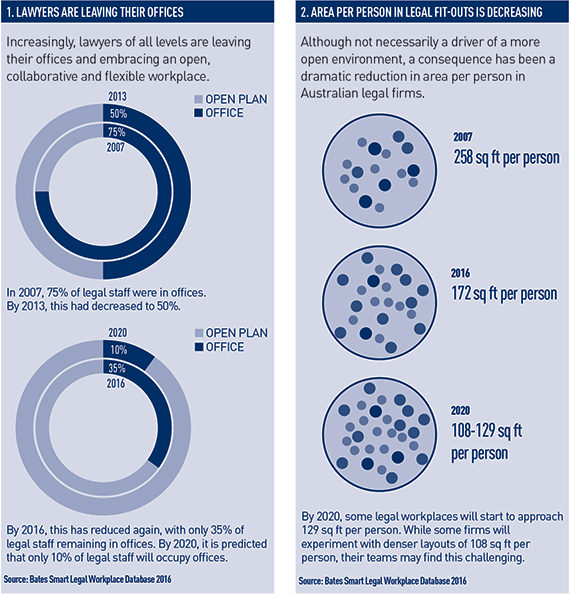
Drivers of change
Competition
Law firms are facing a double threat – an uncertain global economy, coupled with unprecedented competition. Disruptor law firms are challenging the way they do business, using technology and outsourcing to create competition. This has led to more fixed fee structures and lawyers are looking for efficiencies. Collaborative work methods deliver faster results and some law firms are looking to a more open environment to support this cultural change.
Collegiality & knowledge sharing
The primary resource of a legal office is the knowledge and experience of its staff. It is one thing to win the war for talent, but you then need to access this “human database”, rather than allow silos to grow. Young staff want access to senior staff and their experience; valuing interaction rather than eight hours of isolated work – cellular offices can make this difficult to achieve.
The workspace as a business tool
Real estate is the highest cost to law firms after salaries and they have become increasingly aware that a significant percentage of their workspace is under-utilised and therefore overpriced. The drive is for tenancies to work harder, increasing the utilisation of all of the spaces, including individual work areas.
Saving space = cutting costs
From 2007 to 2016, the average area per person in Australian law firms has dropped from 258 sq ft to 172 sq ft – a 30% reduction in overall area. UK firms in 2016 align more clearly with Australian areas in 2007 – at around 285 sq ft per person – indicating there is room to move.
But some Australian firms have gone even further, rivalling other professional services workplaces and decreasing to 129 sq ft per person. If this trend continues, this number could decrease to 108 sq ft per person by 2020 (see chart 2).
What does the new workplace look like?
Over the past 10 years, Australian architecture practice Bates Smart has designed in excess of 14 hectares of legal workplace fit-outs. Our research team has collated the data generated by these projects to analyse how the workplace has changed and forecast what it will look like in 10 years. This generated three key findings:
Lawyers are sharing space
Aligned with the reduction in offices has been an increase in shared spaces. These spaces, such as breakout and team meeting areas, are aimed at increasing collaboration, networking and the breaking down of knowledge silos. In 2007, individuals “owned” 48% of the floorplate, versus 27% allocated to shared and client spaces. By 2016, this allocation of space has almost reversed. Now only 30% of space is individually owned and 45% is allocated to shared spaces (see chart 3).
Over five years ago it was demonstrated that employees in top performing companies spent 14% more time collaborating and 25% more time learning than those in average companies. Conversely, employees in average performing companies spent 9% more time in isolated focused work. Top performing companies had 5% greater growth in profit and 4% greater growth in revenue. Put simply, sharing pays.
The new legal workplace understands this and is designed as a place for increased collaboration, knowledge sharing and innovation. Lawyers are working together to develop and share their knowledge base and client experiences. The ambition for increased collaboration must not come at the cost of the ability to focus. This still remains critical for lawyers.
Lawyers still need to work in quiet spaces – even as a team. So not all lawyers are leaving their offices behind. Many adopt a hybrid model where practice groups can allocate offices as required. Other firms believe that change is driven from the top and strong leadership takes the entire practice into open work environments with offices on hand for ad hoc use.
What is consistent across all firms is that a reduction in offices needs to be accompanied by an increase in shared spaces. These spaces, such as quiet rooms and team meeting rooms, are needed to support individual and team-focused work, while the open areas work to break down knowledge silos.
Since 2007, we have seen a significant increase in the number of shared enclosed spaces dedicated to team-focused work. Rooms such as case/war rooms, where teams can embed themselves, are key to supporting lawyers in open-plan layouts.
The hospitality revolution is here
Law firms compete to develop closer ties between their staff and clients, striving for a more personal experience. The result is an increase in hospitality spaces for both clients and staff.
In 2013, legal fit-outs dedicated 6% of their total area to clients. None of this space was shared with staff. By 2016, this area had more than doubled to 14%. The growth in this space is mostly dedicated to client hospitality. Of the total client area, 21% is hospitality facilities shared with the staff.
A small increase to 15% by 2020 would align the hospitality provisions with the technology sector. Our data predicts a shift towards space sharing with, ultimately, 30% of the area shared between staff and clients (see chart 4).
Law firms have always focused on their clients’ experience and we have seen their preference vacillate between in-house and external dining. Over the past four years, the emphasis has been on a broader range of in-house hospitality offerings. Baristas, sky terraces and fine dining prevails as firms look to a personable and unique experience, akin to that of a five-star hotel.
Clients are becoming more focused on the individual lawyers with whom they work. They want to be part of a team whose business is not too different from their own. To this end, firms are blurring traditional boundaries between staff and client areas. Staff are invited to share some of the client hospitality spaces, signalling to them their value to the firm. Conversely, clients are offered views into open-plan work areas to display the depth of talent.
A resurgence in knowledge ownership has resulted in increased demand for large-scale seminar and cocktail event spaces. These areas require flexibility so they can be used throughout the day.
Using operable walls, they often adjoin reception and open up for large client cocktail parties or “town hall” staff meetings. These spaces can also extend further to the staff café/breakout space to create larger entertaining spaces.
In all of these configurations, flexibility is paramount. By combining key areas, law firms are both increasing their capacity for entertaining and increasing their space utilisation. They are dedicating more space to client areas, but making it work harder.
The future looks to fintech
In the past five years, advances in technology have revolutionised the financial workplace, coining the term fintech. Fintech companies are now in a war for talent, trying to lure programmers away from tech companies. There are some striking similarities with legal firms:
- a similar workstyle requiring long periods of individual, quiet, focused work;
- ownership by a group of partners who share equity in the business;
- individual contracts for a broad client base ranging in size; and
- the need to specialise across a wide variety of sectors.
There is one certainty in this changing legal landscape: it will continue to evolve. The workplace model that a law firm selects today will change in the future, often within the life of a tenancy.
Fintech achieves this level of workplace flexibility with three key initiatives:
Agile spaces – Technology workplaces ensure business agility with the ability to contract and expand their teams in different departments at the same time. For this to occur they need to minimise specialised spaces, but support unique requirements.
Mobile staff – Flexible working is the key cultural challenge most law firms are currently working through. Not only the hours and location of work but the overall structure of firms is changing. Divisions between practice groups are becoming more flexible. Long-term “ownership” of desks and offices inhibits the speed with which teams can reconfigure and get the most out of their space.
Space utilisation – If law firms commit today to a lease, they need to build in the flexibility to grow or contract in the future. Flexible desk arrangements can allow a business to increase capacity by up to 30% just by adding chairs and monitors, and decreasing personal space.
While T-shirts and ping pong may seem a long way from the legal workplace, the alignment between fintech and legal firms can provide a pathway as to how legal firms navigate an uncertain future.
Kellie Payne is studio director at Bates Smart and leads the Workplace Strategy team. Bates Smart is a multidisciplinary design firm delivering architecture, interior design and urban design across Australia







